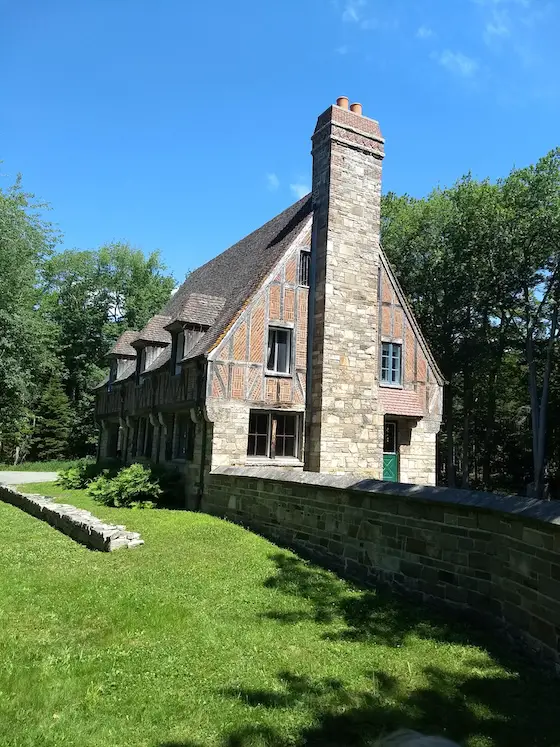Property Disclosure Form Dangers

The top of a chimney is too high up for most. You might never have what it takes to go up that high to inspect it. Copyright 2025 Tim Carter
Property Disclosure Form Dangers - You Better Tell the Truth
It all started with a chimney of all things. Last week a woman, who lives in a quaint small New Hampshire town just fifty miles north of me, hired me. She wanted me to review a house inspection report. She had put in an offer on a cozy little home.
CLICK HERE to hire me to help you with a problem.
This column should resonate with you no matter who you are. You may reside in your own home, live in a condominium, or even in an apartment. Many teaching moments presented themselves as this consult unfolded. Technology allows me to do these consults long distance helping folks like you. Many hire me for two reasons: I’m an expert, and I don’t have a dog in the fight.
I was aghast when I viewed the house inspection report. Little did the woman know, but she had the good fortune to hire one of the best inspectors out there. He was ASHI certified. ASHI is an acronym for the American Society of Home Inspectors. In my opinion, it’s the best certification you can have.
The inspection report had more red ink notations in the summary than I’ve ever seen before. There were at least four pages at the top end of the report with red-flag warnings. The most significant one concerned the chimney that projected above the steep roof. It had a large crack in it.
Before hiring me, the woman had obtained a quote from a local mason to repair the chimney. His bid had some decent detail in it, but he didn’t mention two very important items that most masons fail to do when building chimneys.
The Brick Industry Association (BIA) is, in my opinion, the best source of information concerning how chimneys should be built. They have an excellent series of Technical Notes on their website. One is devoted to residential chimneys.
A top flashing and a 3-inch overhang are the two items almost all masons forget to install. Water ruins chimneys. The flashing prevents water from soaking down into the rubble and the overhang causes most water to fall away from the chimney.
The estimate to rebuild the chimney was north of $15,000. Electrical issues discovered by the inspector added an additional $7,000 of work. A slew of miscellaneous other pesky defects added yet another $15,000 to the needed repairs.
It’s important to realize I was a real estate broker in the state of Ohio for over twenty years. I got my license just after getting out of college. I knew it would help me in my fledgling house-flipping business in the 1970s. I also took all sorts of extra night classes in real estate and was one of the first Graduates of the Real Estate Industry getting a coveted GRI lapel pin.
What does all of this have to do with you? If you’re thinking of selling your home, defects in your home can make it less attractive. These same defects can put you in a not-so-good place when it comes to negotiations. Just three years ago we emerged from a seller’s market where buyers ignored defects.
Now, with higher interest rates, we’re in a buyer’s market. Sellers must present their best face and have few or no defects to get the best offers. Mortgage brokers are also starting to pay more attention and look for houses with fewer defects.
Let’s say you’re the seller in this situation. You decide to reject the woman’s counteroffer. You go fishing trying to find another buyer who might not have such a great inspector. This puts you in a very precarious position if you don’t fill out a new property disclosure form (PDF). The ASHI inspector has now made you aware of defects that you know about.
If you fail to fill out a new PDF, and don’t alert future buyers as to the defects, you may be subject to a lawsuit down the road. If you’re the listing realtor, you will be sucked into the suit like a child sucks on a soda straw.
Yes, the overriding principle in real estate is Caveat emptor - “let the buyer beware”, but I can assure you that if a future buyer discovers you were not telling the truth, you’ll have a very hard time in a courtroom.
Your takeaway should be this. Don’t put off repairs to your home. Attend to things as they need work. Don’t try to disguise major issues in your home. Assume an ASHI inspector will show up and discover your deception.
Are you thinking of buying a home? Then you might want to get a copy of an inspection checklist I developed that helps you identify major defects in homes you might miss as you walk through a home for sale. My checklist might allow you to kick a house to the curb before you spend hundreds of dollars on an ASHI inspector.
You can purchase the checklist here.
Column 1620